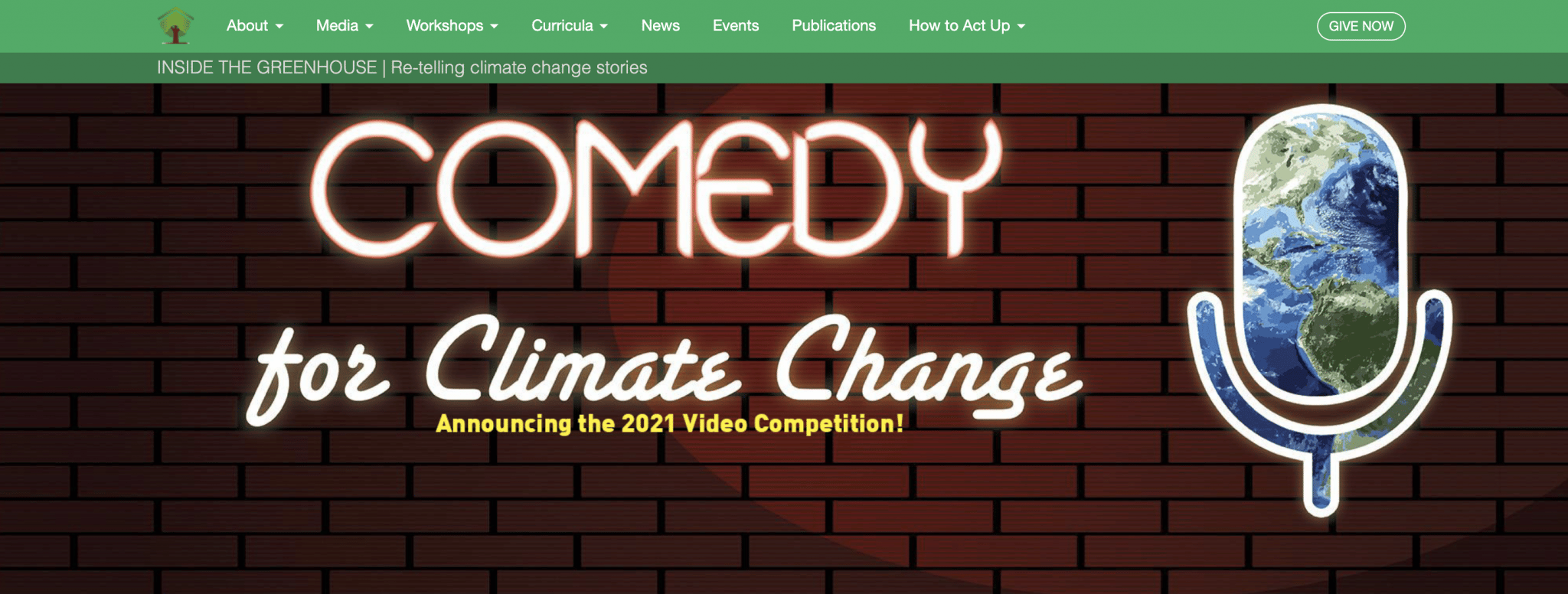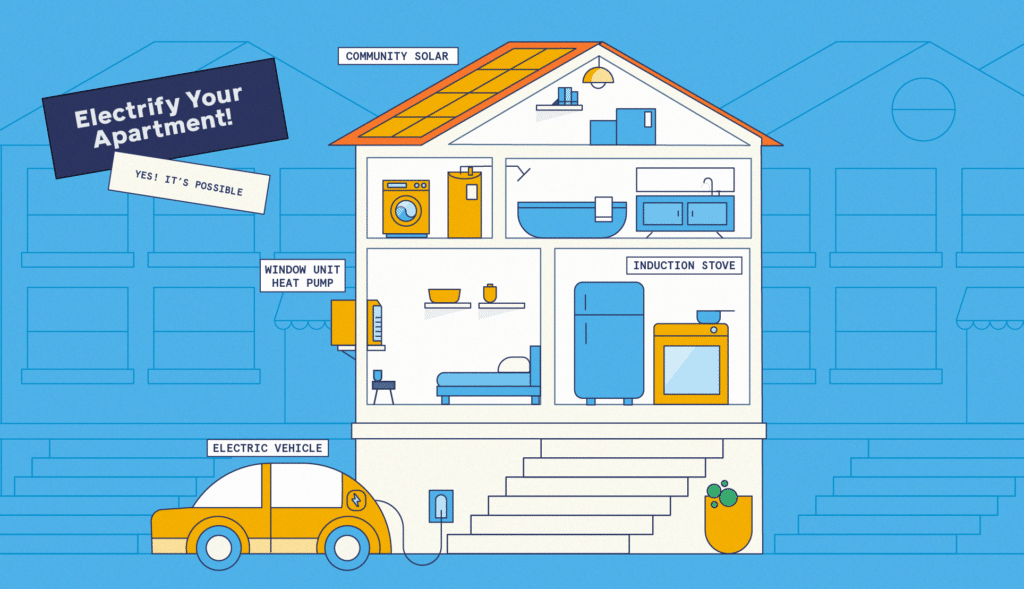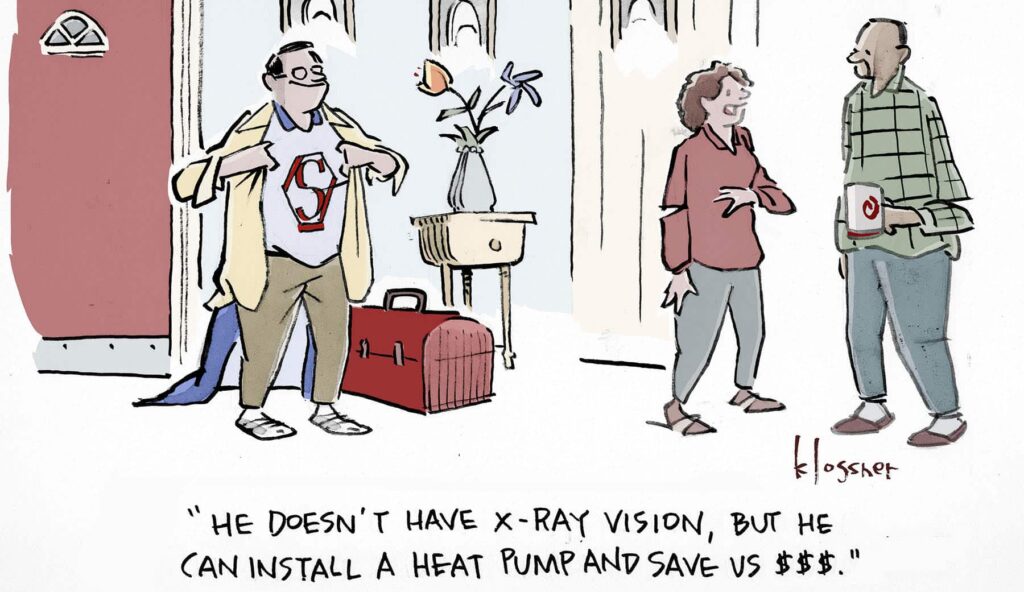This article is from the February 3, 2021, issue of Flip the Script, a weekly newsletter moving you from climate stress to clean energy action. Sign up here to get it in your inbox (and share the link with a friend).
Coronavirus, climate change, ongoing racial injustice. We humans are grappling with some heavy stuff (and that’s just naming a few).
But pair that list with what else we know: People are getting the vaccine. Climate solutions are here. The arc of the moral universe is long, but it is bending toward justice (to quote Rev. Martin Luther King, Jr.). That doesn’t tell the whole story, of course, but hearing it makes the heavy stuff feel just a little lighter, right?
While the behavioral science research on the subject isn’t quite that simple, this exercise helps illustrate what the experts know: Words, stories, and images elicit emotions. And feelings like fear, despair, hope, awe, and pride all play a role in how we feel and think about problems—and whether or not we are inspired to act on them.
At Generation180, we’re focused on inspiring people to act on clean energy. To better understand how emotions play a role in motivating action, we interviewed social scientist Ezra Markowitz, Ph.D., associate professor at the University of Massachusetts, to talk about his work on environmental decision-making and communication. Here is that interview, edited for length and clarity. Enjoy!
-

Dr. Markowitz is an interdisciplinary environmental social scientist and publicly engaged scholar interested in leveraging our understanding of human behavior to promote environmental sustainability and social well-being.
Generation180: What does “environmental decision-making” mean?
EM: In the broadest sense, it refers to pretty much any action people take, individually or collectively, that impacts natural and built systems. This includes everything from everyday household choices that affect energy and water consumption (think: choice of light bulb, length of showers), to transportation mode choice, civic engagement, and activism oriented towards environmental sustainability or societal challenges (think: protesting, boycotting, writing letters to policymakers).
Generation180: Why is it essential to elicit a range of emotions — sadness and anger but also pride and hope — in order to inspire action, when it comes to climate change?
EM: We can’t expect everyone to respond to a complex, multifaceted problem like climate change in the same way emotionally, or even for the same person to have just one set of never-changing emotions about climate change. We need to engage the full suite of human emotions when communicating about climate change, allowing individuals and communities to respond in the ways that are most productive and supportive of meaningful, positive action for them.
-

Probably contemplating a lifetime of “environmental decision-making”
Research also shows that individuals are willing to take action—even if it requires some level of effort or sacrifice—in response to an array of emotions, such as awe, pride and anger. Eliciting negative emotions can grab someone’s attention but to sustain it over time, as in the case of social movements for example, positive emotions such as hope and gratitude need to be elicited too.
Generation180: What are some of the most effective stories to tell about climate change if you want to motivate people to act?
EM: Effective stories are ones that find a way to meaningfully and honestly weave together what we know from climate science—including our best predictions of what the future could look like—with the narratives and experiences that already resonate with, and oftentimes come directly from, our audiences. It’s about working with your audience to identify what aspects of climate change can be integrated into their existing ways of understanding the world around them, and providing a new, yet relatable, lens through which to reassess what they know.
This means finding and working with the metaphors and idioms, widely shared cultural models, values, and interpretations of lived experiences that people already hold and use in their daily lives. For example, using the language of self-reliance and renewal to talk about clean energy technologies can help some people and communities see them as opportunities to be pursued rather than mandates being forced upon them by others for ideological reasons.
Generation180: Our mission is to equip and inspire people to take action on clean energy. We want to shift the conversation from one of helplessness and apathy to hope and action. Do you have advice on how we can achieve this, based on your research?
EM: Despite the deep political polarization that surrounds climate change and nearly every other major societal issue we face in the U.S., clean energy projects and policies are relatively free of the political baggage that has slowed large-scale action on climate change over the past two decades (e.g., putting a price on carbon). People across the US tend to view clean energy technologies very positively and, by-and-large, want the energy grid to move towards them aggressively.
Clean energy projects and policies are relatively free of the political baggage that has slowed large-scale action on climate change over the past two decades.
Now that many renewables and other clean energy technologies are at, or in some cases, are below price parity with fossil fuel sources (at least in most parts of the country), I think there will be even more enthusiasm for moving to expand capacity quickly over the coming decade.
That isn’t to say there won’t be challenges and roadblocks from vested interests; and, it’s also important that clean energy advocates take seriously concerns about how a transition away from fossil fuels will negatively impact certain groups and communities within the U.S. That’s not just for people who work directly in fossil fuel extraction and refinement. Think, for example, about all of the car repair shops and gas stations, many of which are small businesses owned by individuals or families, that will be forced to shift their business model as we move away from gasoline-burning vehicles. Integrating themes around improving public health, addressing existing and novel inequities, and making the energy system more reliable and resilient will be really important in maintaining and strengthening public support for the coming energy transition.
Generation180: Can you point to some specific examples, from your work or in the field, of effective communications efforts that yielded positive behavior change around climate?
-

A recent program from Inside the Greenhouse
EM: I think there is some great, innovative work going on these days in the climate communication arena, so I’ll just point to a couple. The American Association for the Advancement of Science’s How We Respond project brings together a diverse set of case studies and resources that are practically useful and inspiring, in part because they leverage local, relatable stories. Inside the Greenhouse, based out of the University of Colorado Boulder, is another group that I think does creative, evidence-informed climate communication work. The Center for Climate Change Communication out of George Mason University has done really exciting and innovative work helping TV weathercasters and journalists integrate climate change into their on-air segments. And of course there is a new generation of activists who are doing critical work to build a true social movement around climate change.
**********
Ezra also makes a compelling case for pairing crisis narratives with solutions in a recent Washington Post oped co-authored with writer Lucia Graves: “Being bombarded with threatening information only produces positive outcomes when people are also given practical, meaningful ways to reduce the highlighted threat… Even when the path forward is difficult, solutions-oriented narratives and imagery offer a positive vision that can promote greater issue engagement, efficacy and large-scale public action,” he says.















